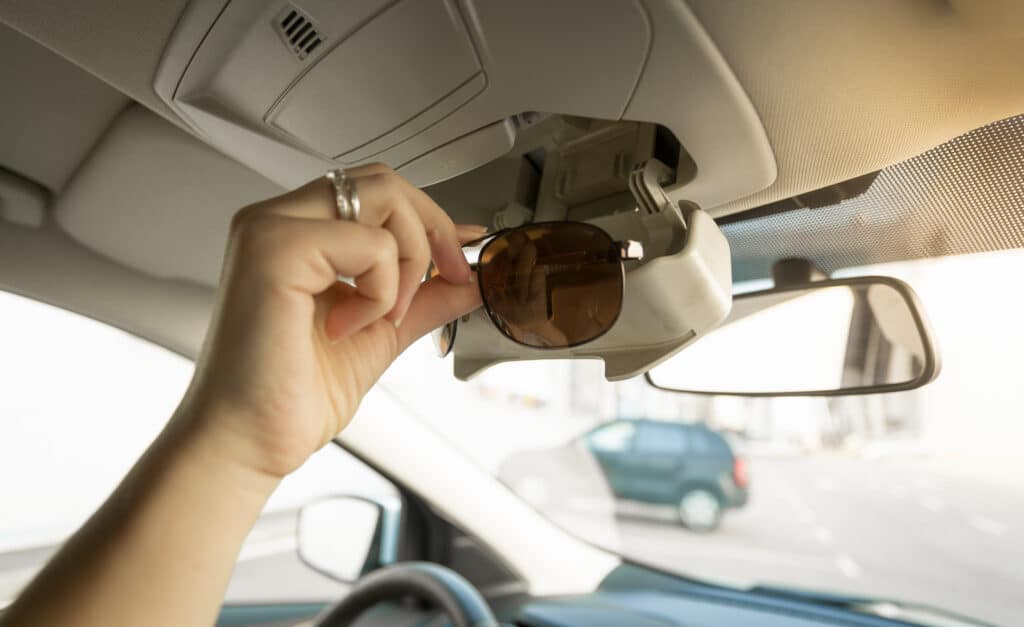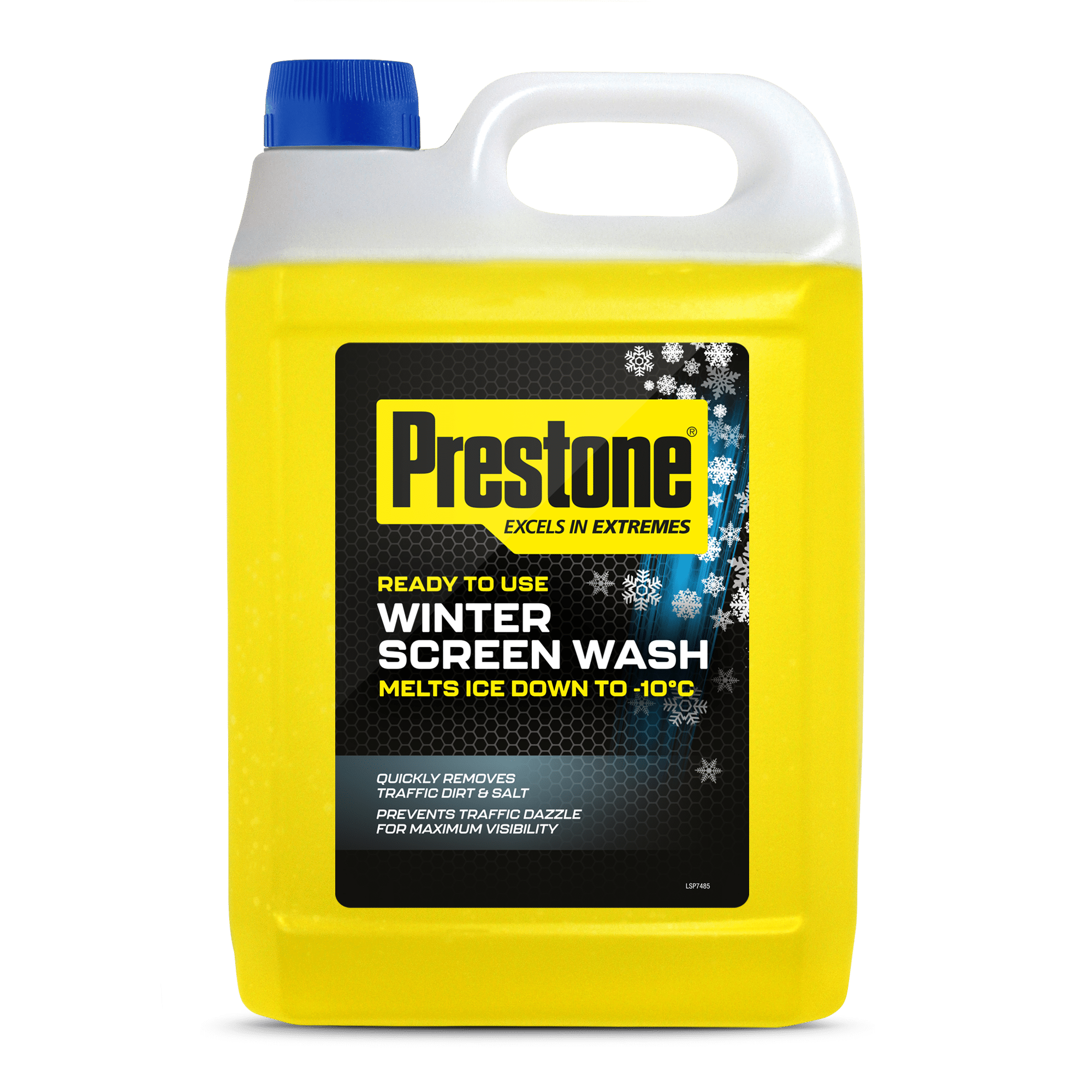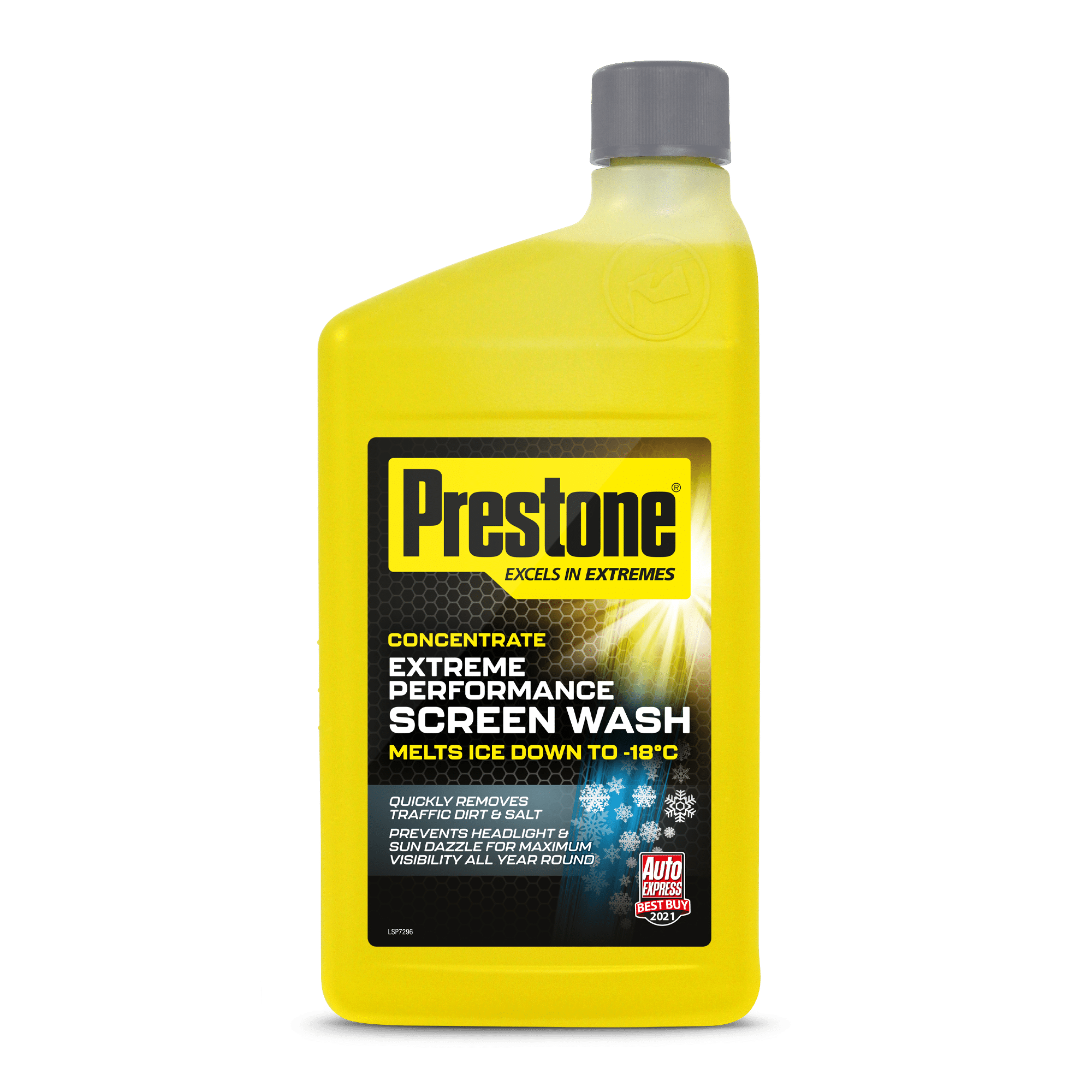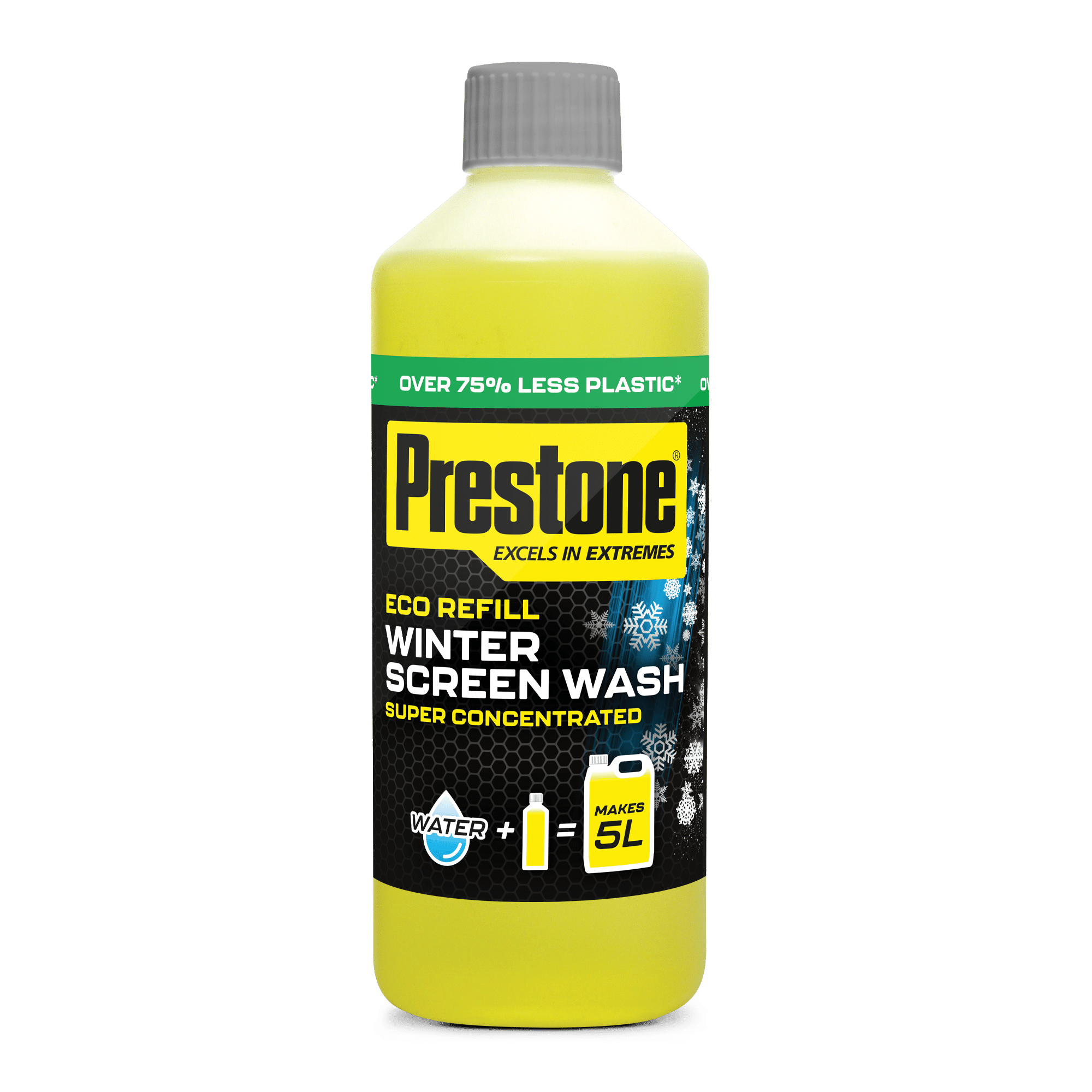Due to the low angle of the sun during the winter months, this can cause dangerous driving conditions, particularly during standard commuter hours. Indeed, winter sun can be so dangerous that we’ve specifically highlighted it in a blog post.
For this reason, extra caution should be taken when driving between December and February. In this blog, we’ll explore some top tips for driving in low winter sun.
Tips for Driving in Low Winter Sun
Keep Your Car Windscreen and Mirrors Clean
During the winter, dirt, debris and frost can accumulate on windows and external mirrors due to colder, wetter conditions. Not only can the dirt itself lead to decreased visibility, but it can also introduce added glare by scattering the light in many directions.
Before every journey, ensure that your windscreen and mirrors are clear and clean. A good quality screen wash, such as Prestone’s Winter Screen Wash, can make light work of cleaning your windscreen even in extreme conditions.
Of course, having the best car screen wash isn’t much use if your wiper blades aren’t performing at their best. So, winter is a great time to check the health of your blades.
Keep a Safe Distance Between Yourself and Other Vehicles
Keeping a safe distance is crucial at any time of the year, but especially important during the winter when stopping distances can be tenfold.
In normal driving conditions, we advocate for the two-second rule. The two-second rule means you should reach a point on the road two seconds after the vehicle in front of you. This rule works at any speed.
In the rain, your stopping distance could be up to twice as long which means you should double your gap to the car in front – and when it’s icy, you should leave an even bigger gap to ensure you have a sufficient safety margin.
Use the Car Visor

It might seem obvious, but you’d be surprised how many drivers try to block the sun with their hands instead of using the sun visor. When the sun is affecting your visibility, adjust your visor accordingly. Although some of your windscreen will be blocked, visibility shouldn’t be majorly impacted if your seat is at the correct height.
Failure to block the sun out of your eye line may result in being pulled over by the police for not driving with due care and attention, which can lead to points on your licence, a fine or even disqualification from driving.
If you feel that the sun is too bright to drive, don’t be afraid of pulling over to adjust your seat and visor position before carrying on with your journey.
Keep a Pair of Sunglasses in the Car
Sunglasses work by reducing the amount of light that hits your eye, therefore making it easier to see in bright conditions. Although they’re most commonly associated with summer, they’re a handy tool to use year-round.

Polarised sunglasses can be particularly useful for driving as they’re created specifically with anti-glare properties. This means they are ideal for driving in low winter sun. You can keep these in the car, either in the glove box or if your car has a handy spot for them near your rear-view mirror.
It’s worth noting that if you need prescription glasses to drive, you will also have to invest in a pair of prescription sunglasses on hand to ensure that you have full visibility of the road when driving.
Drive Extra Carefully
As mentioned previously, winter can be a dangerous time to drive due to increased stopping distances, so even with the two-second rule, it might be best to still drive a tad slower to reduce that stopping distance.
It’s important to remember that everyone is struggling with the same conditions as you and it really is better to be safe than sorry in this instance. Don’t allow other impatient and unsafe road users to dictate your driving style – drive so that you are comfortable and safe.
Tackling winter sun should be a high priority when winter rolls around. Although the sunshine is fleeting during the winter, it can have a great impact on driving conditions. For more help and advice on car maintenance and safety, check out our guides.



